Pi-BB-RPS Breadboard with RPS and DC-DC Converter Built-in
- Pi-BB-RPS offers a lot of capabilities. It has two power-in sources: DC 7V to 24V (via the terminal block) and the micro-USB power port. It also provides a breadboard with a power bus for soldering your own components.
- Ideal for powering a Raspberry Pi using a solar panel. See attached app note.
- Power switches over from one power source (e.g., solar panel) to another (e.g., battery power pack) when power failure on anyone’s power source is detected (e.g., sunsets).
- GPIO 21 on the Pi indicates which power source is active. GPIO 21 = 1 indicates DC 7V to 24V power supply is in use. GPIO 21 = 0 indicates USB power supply in use.
- Provides 5V USB power out (max 2.5A). USB power out is the RPS power and can be used to power other devices. In addition, 3.3V/700mA power out is available via a terminal block to power 3.3 V devices. 3.3V is independently generated on the Pi-BB-RPS board, offloading the 3.3V power supply on the Raspberry Pi.
- Dual-layer breadboard offers 25 columns x 10 rows or a total of 250 connect points. Five connection points are available for each column, for a total of 50 columns—ideal for connecting breakout boards such as a Real-Time Clock (RTC), etc.
- Includes a 40-pin Raspberry Pi header.
- Includes a mirrored header with solder points. Allows access to all 40 pins on the Pi.
- USB Power powers everything – 5V bus as well as 3.3V bus.
- Use an older power adapter you have (e.g., 12V power or a computer power adapter @ 19V) to power a Pi. Use an older power adapter AND the existing power adapter to power the Pi.
- Use a solar panel and a battery bank to power the Pi. Use a battery bank to move the Pi around without having to reboot it.
- Use the breadboard to attach Real Time Clock, GPS module, or other breakout boards to the Pi.
- The maximum current for the DC-DC converter power source and the Pi-BB-RPS board is 2.5A.
NOTE: If the load is over 2.0 A, we recommend using forced air (e.g., a fan) for cooling. Ensure the ambient temperature is cool enough or air flows over the inductor, removing the heat for the PI and the components on the Pi-BB-RPS board.
Soldering required.


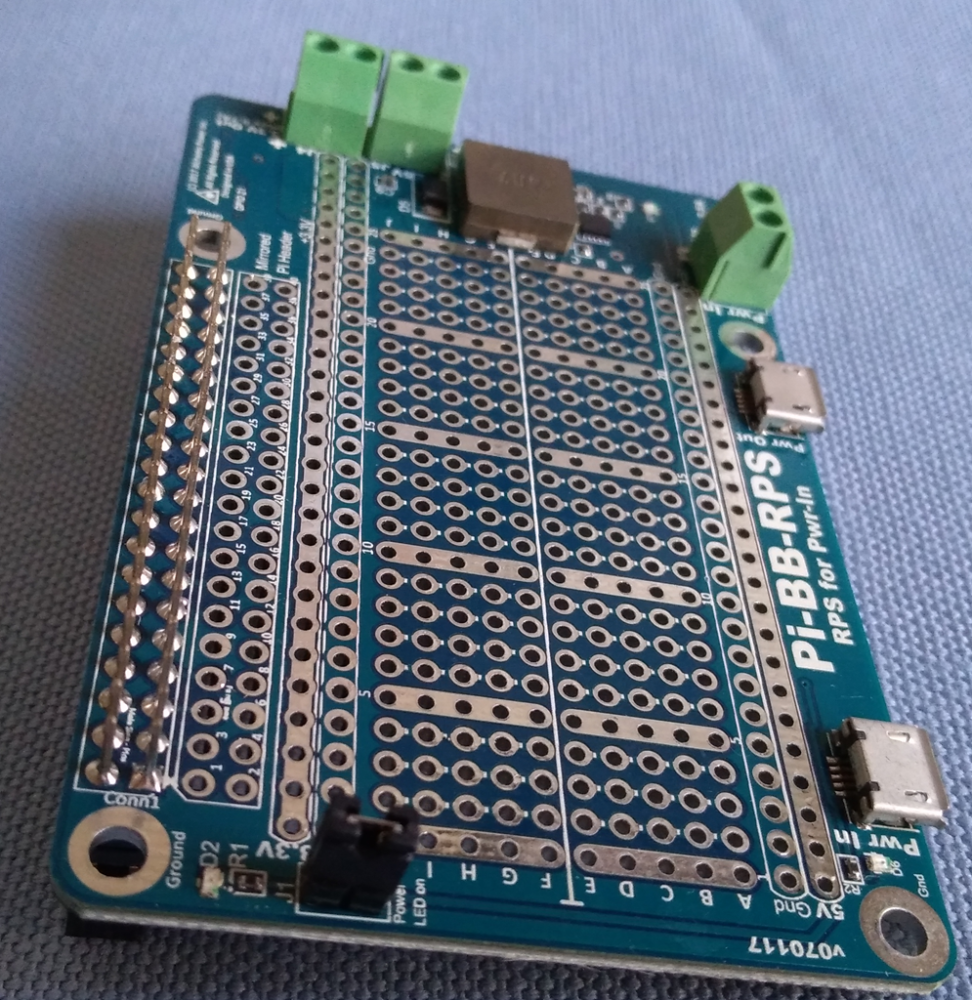
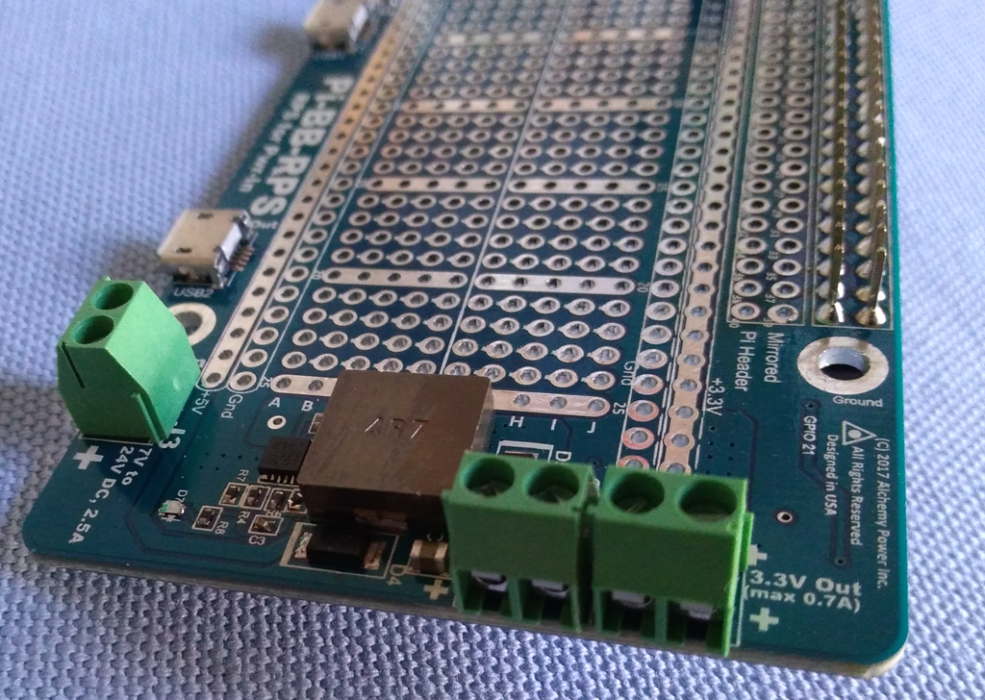
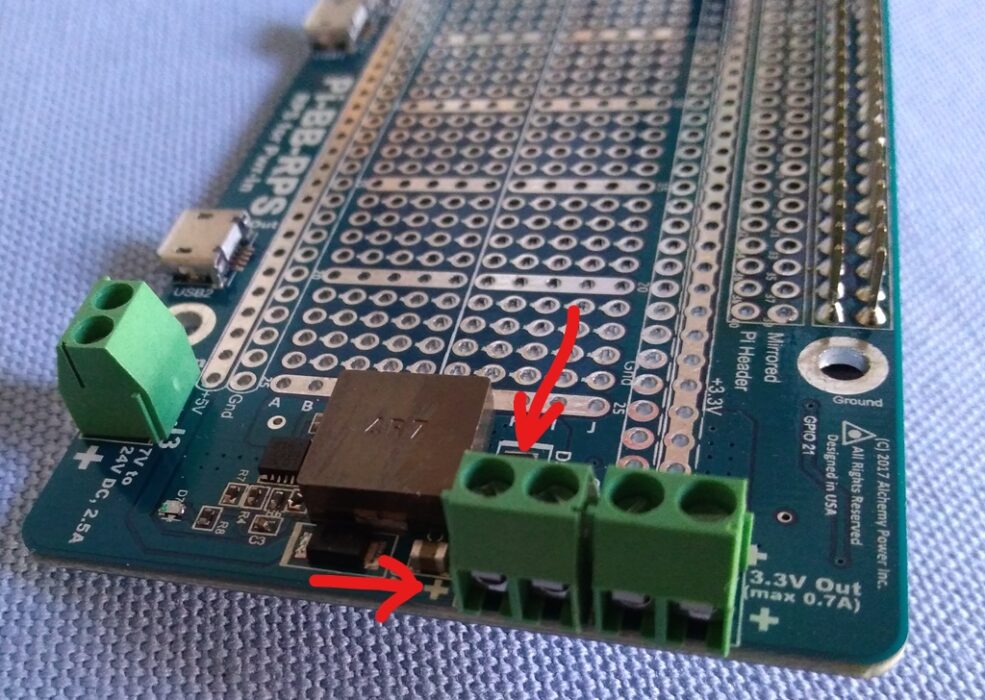

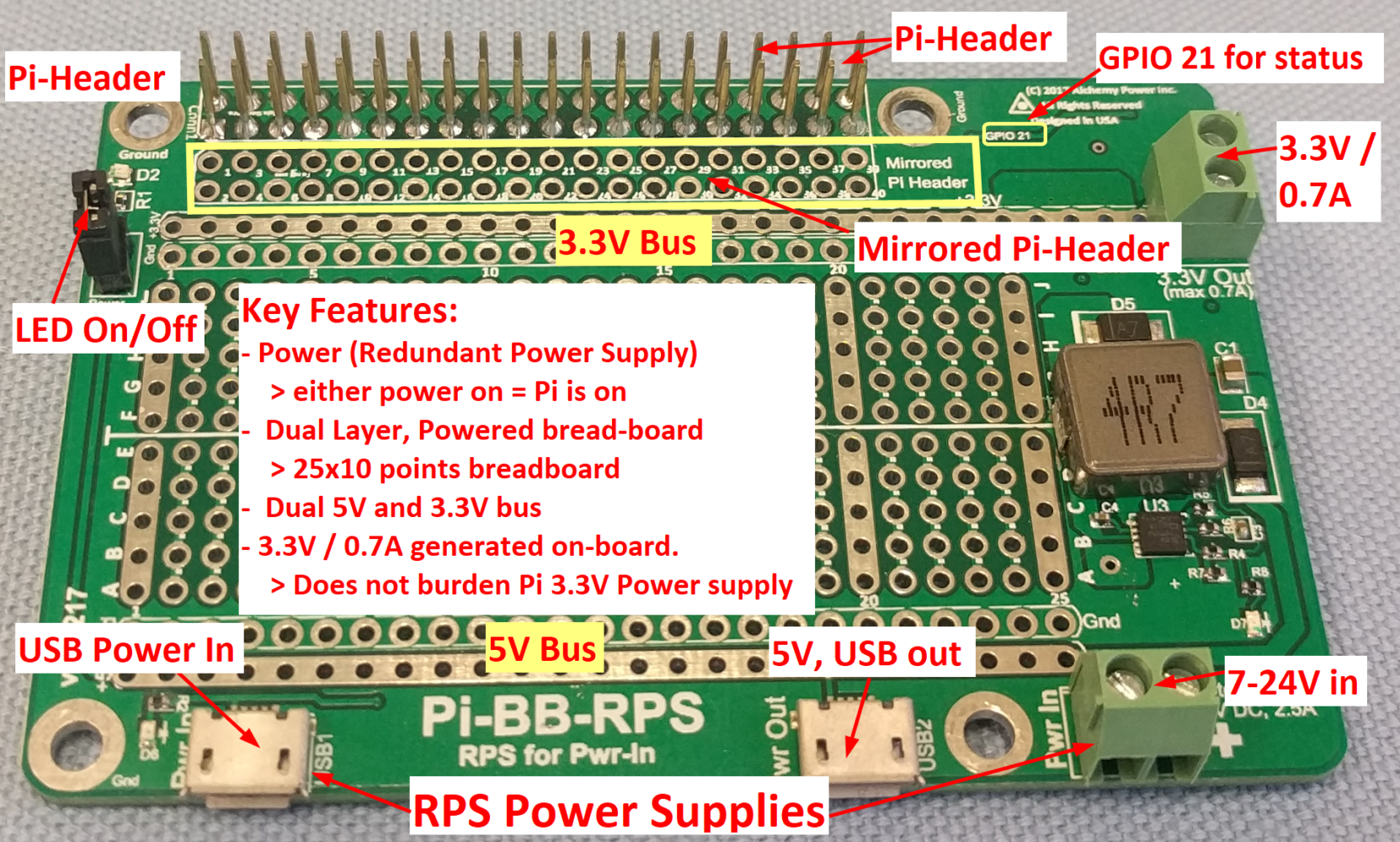
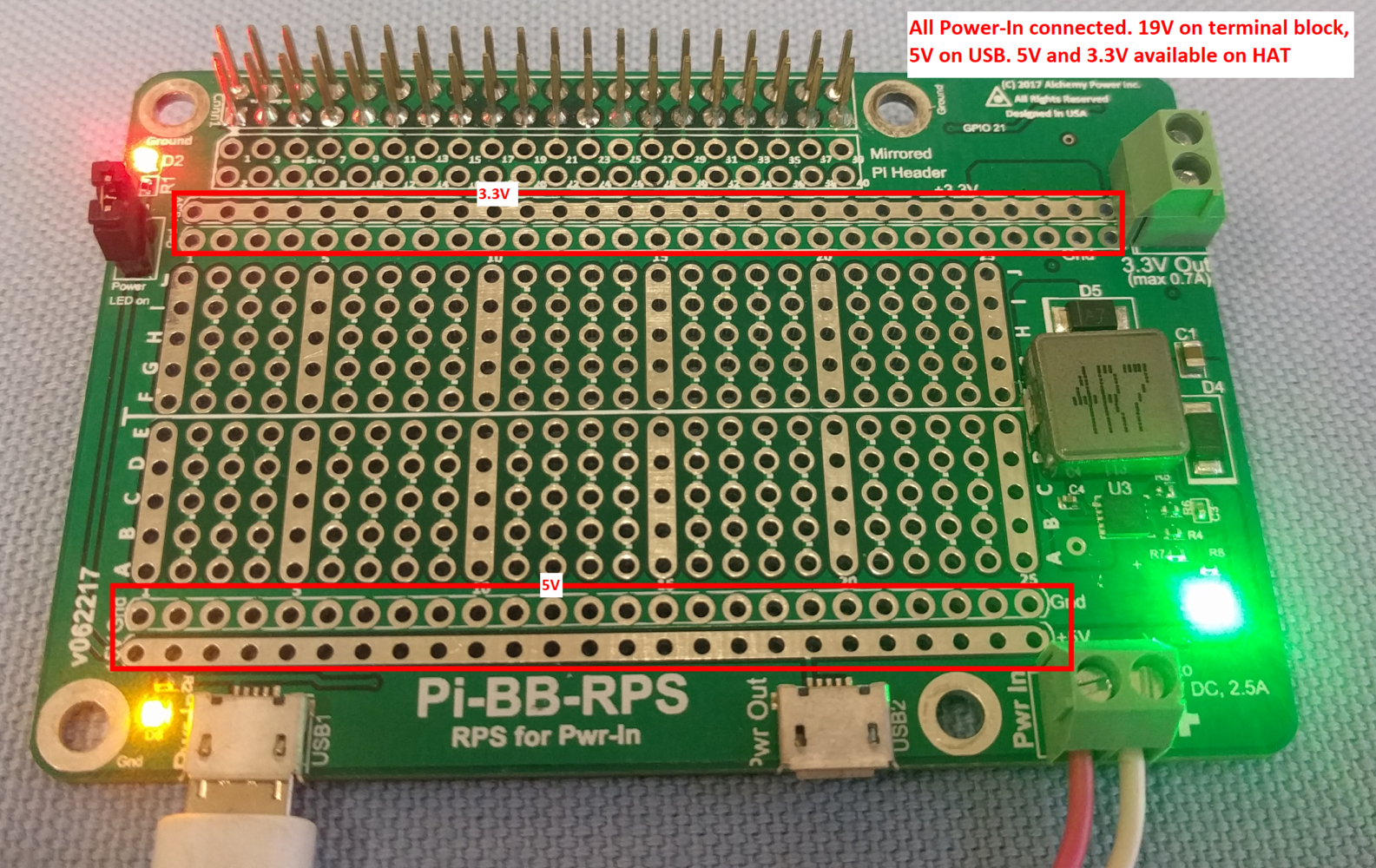
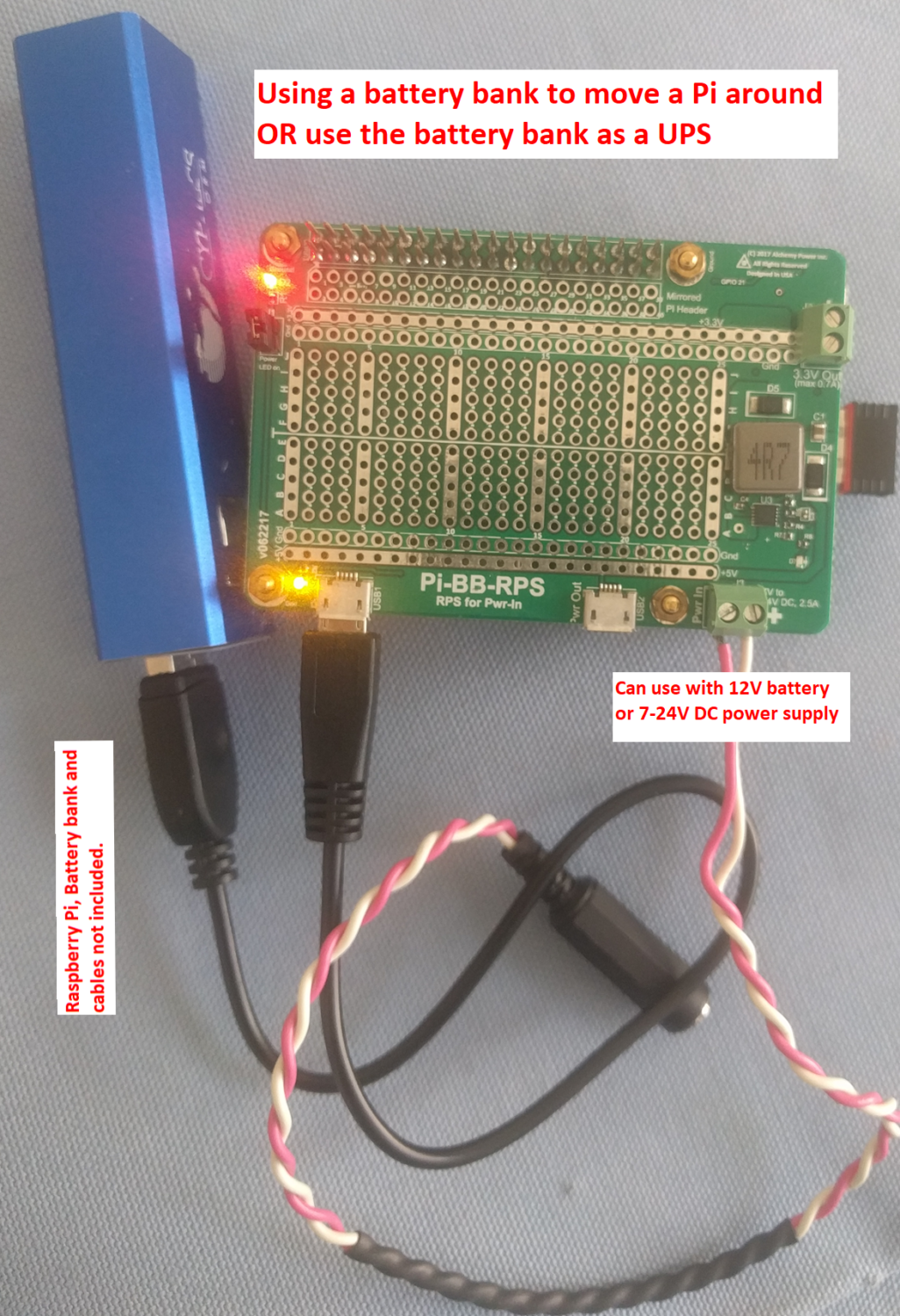
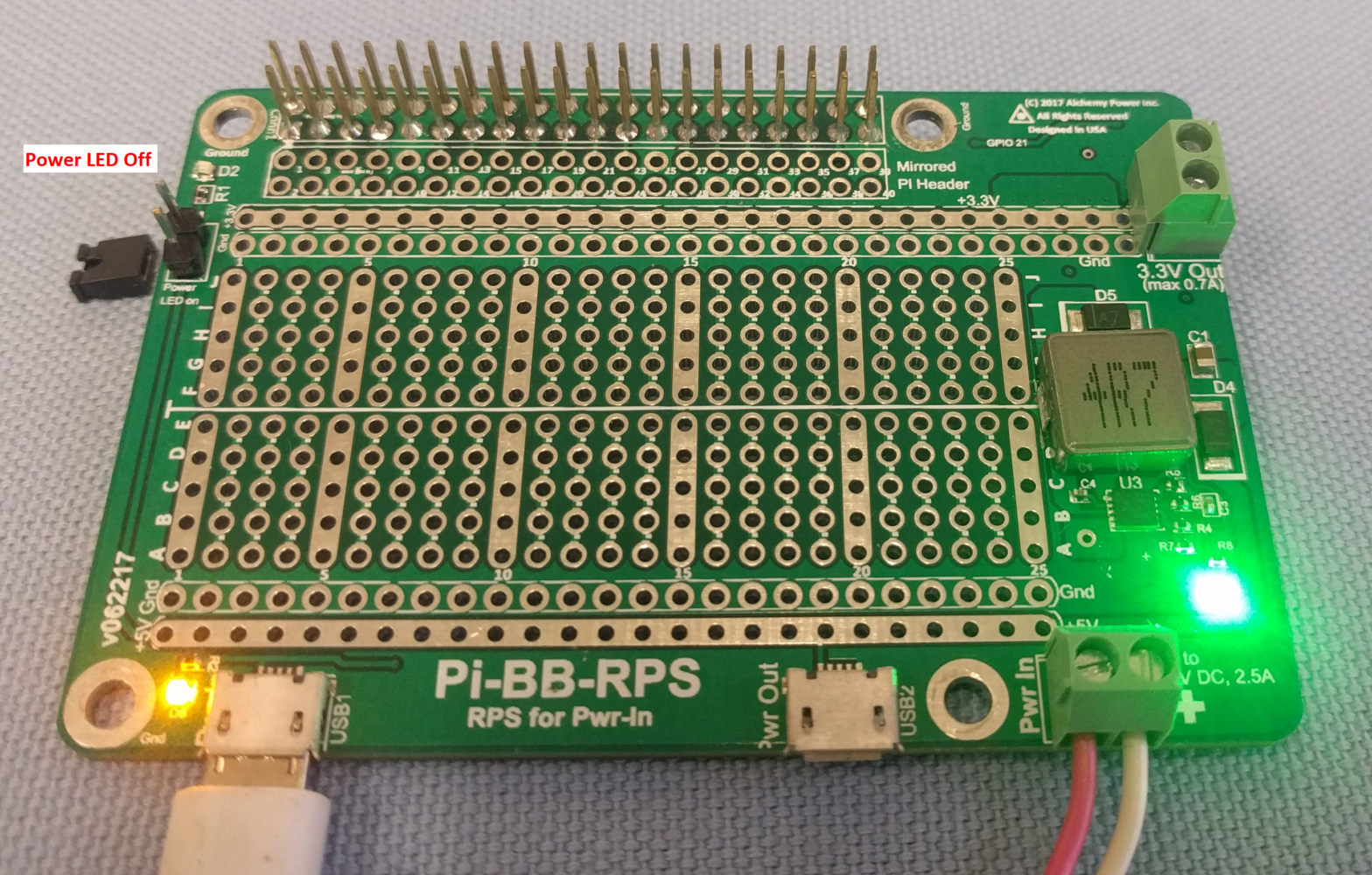
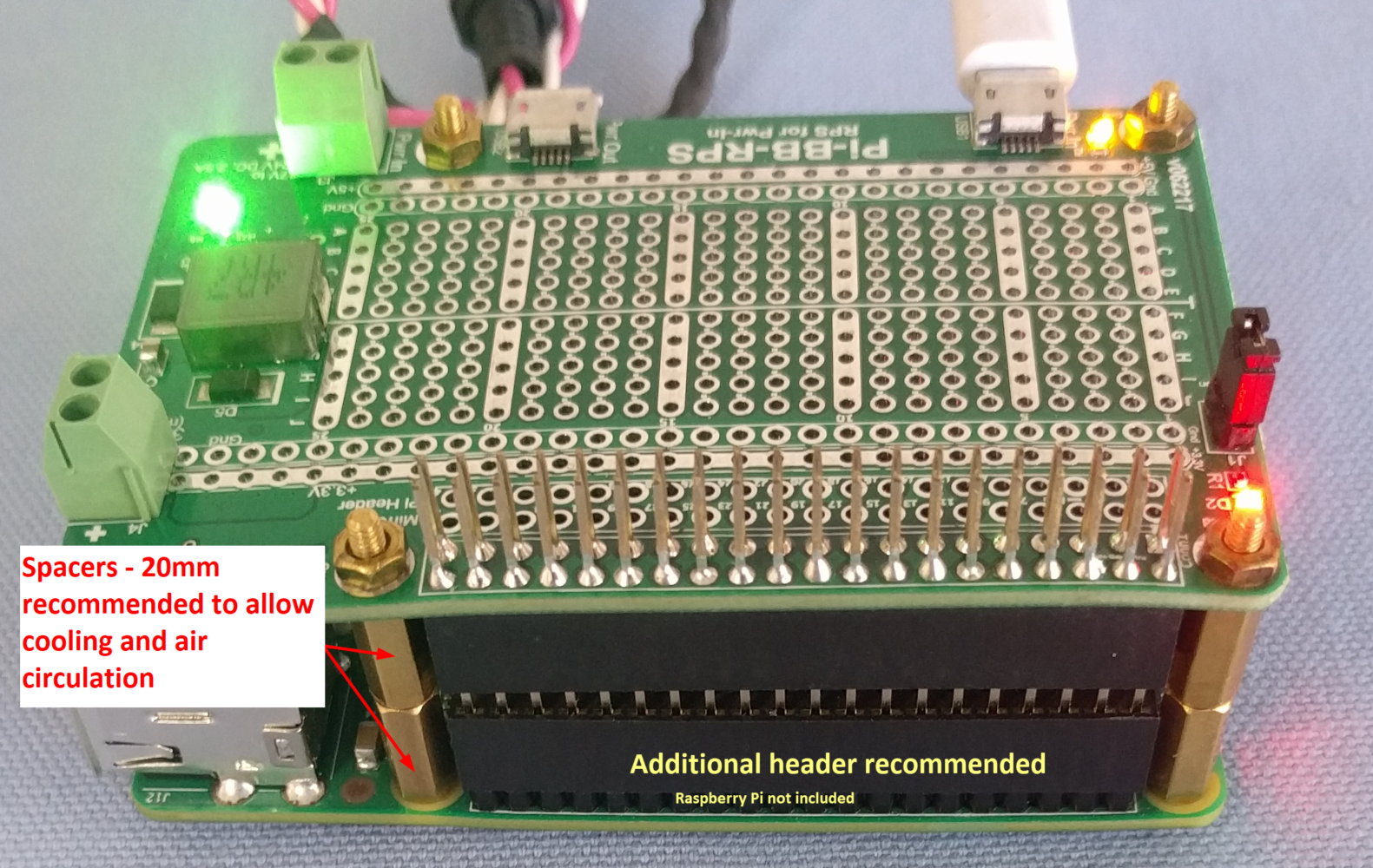

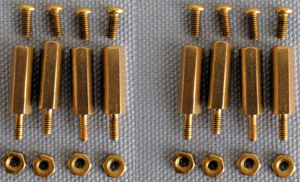
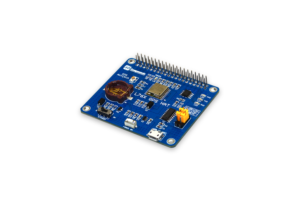
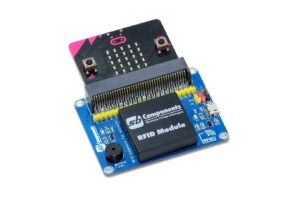
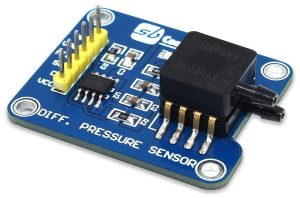
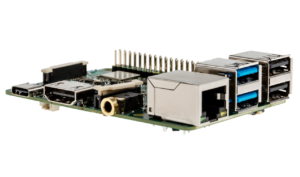
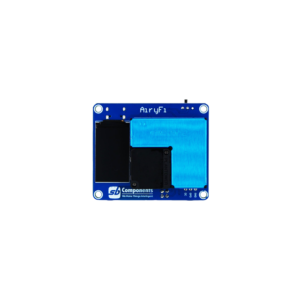

Reviews
There are no reviews yet.